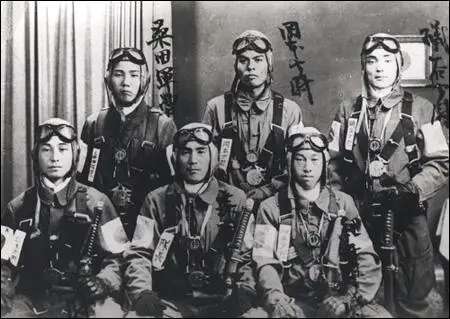Kamikaze
After the fall of Saipan in July, 1944, Admiral Takijiro Onishi, commander of 1st Air Fleet in the Philippines, created the Special Attack Groups of suicide dive-bombing pilots known as kamikazes. Young men were inspired to volunteer as they wished to die for their country. Pilots were trained in just over a week to fly their modified Mitsubishi A6M fighters.
The first kamikaze attack on enemy warships first took place in the struggle for the Philippines in 1944. Kamikaze pilots aimed at the central elevator on carriers and the base of the bridge on large warships. As they had to fly at low altitudes they were very vulnerable to anti-aircraft guns.

During April 1945 kamikaze pilots under Admiral Soema Toyoda launched 1,400 suicide missions as part of Operation Ten-Go. It is estimated that these suicide pilots sunk 26 ships during this campaign. More than 2,000 kamikaze missions were also flown against the US fleet at Okinawa (April-July 1945). By this time the US Navy had learnt how to deal with kamikaze attacks and few ships were hit.
Kamikaze pilots continued to be active until the dropping of the atom bombs on Hiroshima and Nagasaki. Admiral Takijiro Onishi, commander of the Special Attack Group, committed suicide when he heard that Emperor Hirohito had surrendered.
Primary Sources
(1) Manchester Guardian (19th April, 1945)
The Japanese Air Force is showing signs of real weakness after the loss of 2,280 planes in the last month to Allied carrier-based aircraft. Old training planes, with 16-year-old pilots, were among the suicide aircraft which made recent futile attacks on the Allied Fleets.
It is significant that not a single fighter rose to intercept 150 Super Fortresses which swept over airfields today in the fourth assault on the Japanese homeland in five days.

